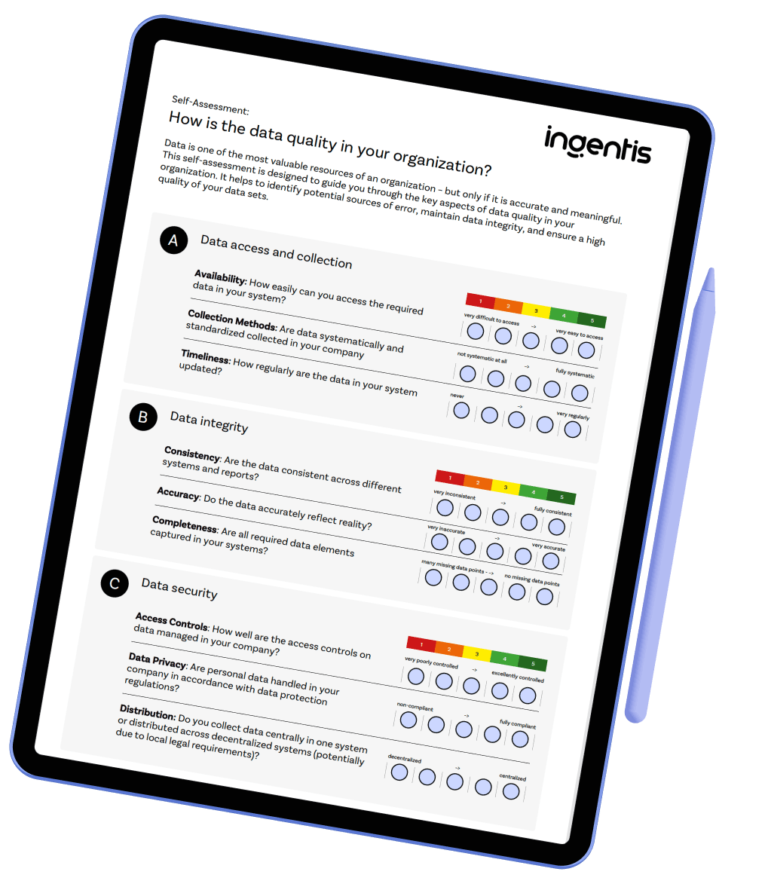The Importance of Data Integrity
Faulty data can take many forms. It can be incomplete, incorrect, outdated, or inconsistent. Such errors often arise from human error, faulty input systems, lack of maintenance, and insufficient data integrity controls. These mistakes can impact all areas of an organization, from HR and finance to marketing and customer service. In this context, data integrity refers to the accuracy and consistency of data throughout its entire lifecycle. It is crucial for organizational stability and the ability to make informed decisions. Without high data integrity, companies become vulnerable to numerous risks that can negatively affect their performance and competitiveness. These risks include the following:
1. Poor Decisions
One of the most serious consequences of faulty data is poor decision-making. Decisions based on inaccurate or incomplete data can lead to incorrect conclusions. According to a Deloitte Research study, only three percent of surveyed executives have all the necessary data to draw accurate conclusions about their workforce. In practice, this can mean making wrong personnel decisions, implementing strategies with little chance of success, or using resources inefficiently. Poor decisions can also cause significant financial losses and impair a company’s competitiveness.
2. Inefficient Processes
Faulty data leads to inefficient processes. When data is incorrect, employees need to spend additional time and resources identifying and correcting errors. This slows down workflows and reduces productivity. Additionally, duplicate work can occur when different departments use different versions of the data, leading to further inefficiencies.
3. Loss of Trust
Trust is an essential component of a successful organization. If employees, customers, or business partners find that a company’s data is unreliable, it can lead to a loss of trust. Employees, for instance, may hesitate to rely on the provided information, affecting their decision-making and motivation. Customers and business partners, on the other hand, may lose confidence in the company’s ability to deliver reliable services or products, potentially jeopardizing long-term business relationships.
4. Compliance Issues
In many industries, companies are legally required to adhere to certain data standards. Faulty data can lead to compliance violations, resulting in legal consequences. Fines, penalties, and legal disputes can be the worst-case scenario. Moreover, such incidents can significantly damage a company’s reputation and undermine the trust of the public and regulatory authorities.
5. Security Risks
Faulty data can also bring about security risks. Inaccurate or incomplete data create security gaps that can be exploited by malicious actors. For instance, incorrect customer data could result in sensitive information falling into the wrong hands, leading to data breaches and financial losses.






